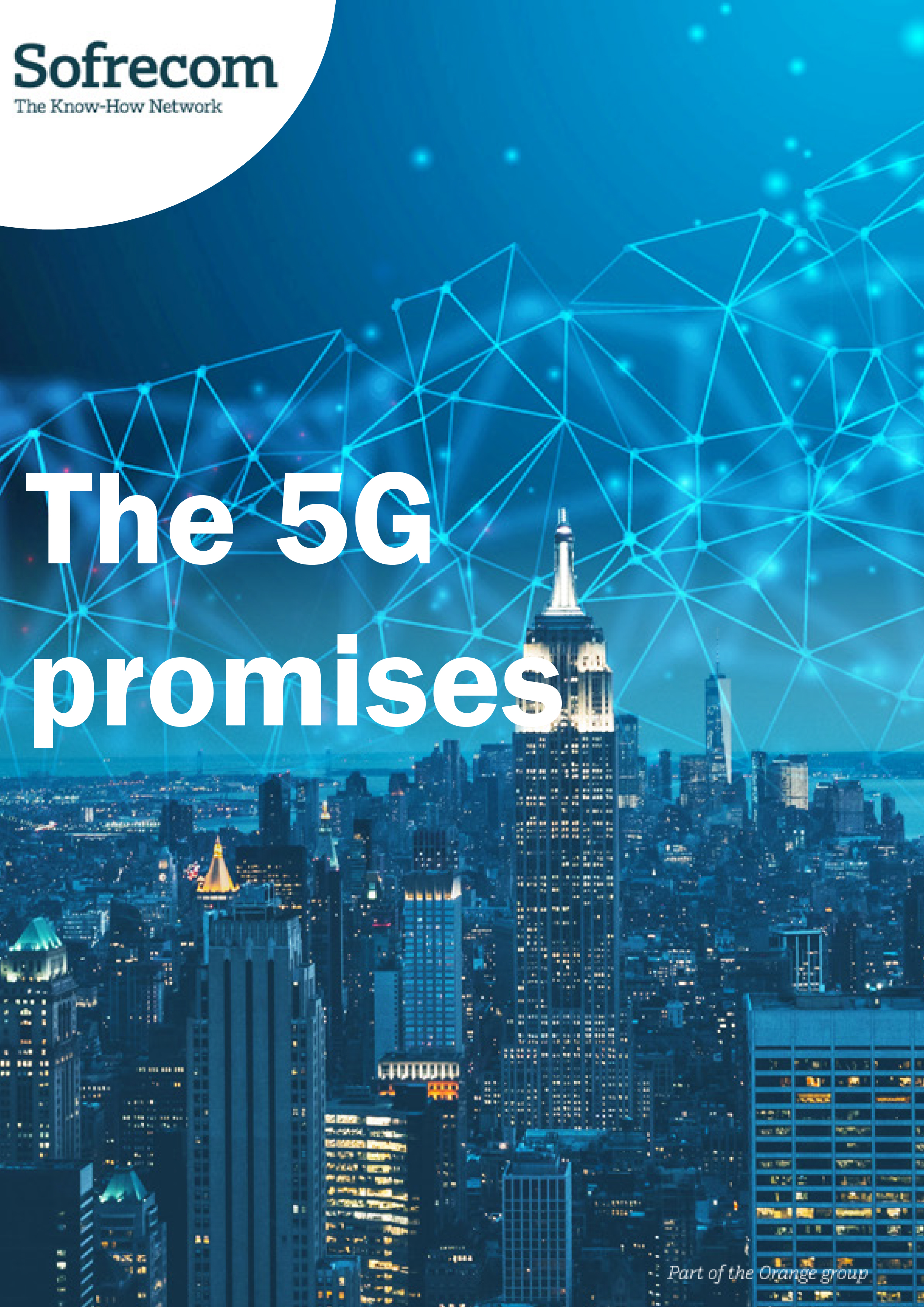
The fifth generation of mobile telephony (new 5G usages) already aims at providing a greater number of targeted services to meet the customers’ and industry needs.
As a result, industry, health, transport, entertainment, and the media will be able to access new usages, which are new business opportunities for the telecom operators as well.
In the Entertainment & Media sector: gaming
Thanks to the high bandwidth and low latency of 5G, virtual reality and augmented reality games (see glossary at the end of the article) broadcast from the cloud will be more dynamic. Gamers will access multiplayer gaming, in real-time, in mobility through their own smartphones, without the need for an additional device.
5G will also enable total immersion in sporting events, for example, with different views of the stadium and players.
A renewed customer experience in retail
A Gartner study about the use of augmented reality and virtual reality shows that 100 million consumers will use both technologies both for their online and in-store purchases. They may disrupt customer experience by helping them view the products inside and outside the stores.
In the health sector: remote care
5G will breathe new life into health thanks to intelligent and connected solutions for medical staff, manufacturers, patients, and researchers.
The new technology will allow patients to connect virtually with doctors and other care providers, by communicating via real-time video or live chat for example.
Concerning local hospitals and clinics, they will capitalize on the high bandwidth and low latency to improve their results for the patients and optimize workflows.
Use case: remote surgery
With the help of robots and high definition audio and visual interactive systems, external experts may perform remote surgery on patients in rural hospitals in due time.
5G networks will also create remote monitoring, smart hospital guides, mobile healthcare, smart hospital management, AI-assisted diagnoses, and treatment applications.
Use case: remote diagnosis
5G may play a role in the solving of social issues, by helping reduce the regional disparities in available healthcare.
The patients treated in primary healthcare facilities may benefit from diagnostic and treatment services supplied by healthcare professionals from higher-level hospitals.
Robots and IoT for Industry 4.0
5G will enable new operating models in the industry.
IoT sensors, robots, computer vision and artificial intelligence based on the cloud will improve the daily lives of staff by automating the processes in order to let them focus on more complex tasks.
Use case: fault diagnosis with augmented reality
By using an augmented reality solution, the expert may find the fault faster thanks to the additional layer of digital information added to the real image. This frees up more time for problem-solving and sharing data faster between the production sites.
5G will provide the low latency required for an augmented image quality. It will also offer a high bandwidth for resolution image quality, and a connection density guaranteeing the connectivity of production sites without interruption.
The connected car: autonomy and security
5G will help vehicles coordinate their trajectories, anticipate each other’s actions and make the roads safer for all.
Several approaches are possible with autonomous vehicles. V2X (Vehicle-to-everything) communications allow for a real-time interaction, without intermediaries with their environment to ensure a safer and more efficient transport ecosystem. These communications may take several forms:
- V2P: Vehicle to Pedestrian
- V2V: Vehicle to Vehicle
- V2I: Vehicle to Infrastructure
- V2N: Vehicle to Network
These communications require ultrafast and reliable connectivity.
The enhanced technical capacities of 5G open the door to new usages, unimaginable a few years ago. It is likely that we are not even able to identify all the new services that 5G will reveal. Concerning the services geared for businesses, the most promising are well identified, with a few footholds such as the connected car and the IoT. On the other hand, the services which will persuade the general public to massively adopt the technology remain uncertain. Most consumers will need concrete and understandable arguments to agree to invest in the required devices and bundles.
[1] https://www.gartner.com/en/newsroom/press-releases/2019-04-01-gartner-says-100-million-consumers-will-shop-in-augme
New technologies, “new realities”
This is the age of new innovative, immersive and video technologies. We are talking today of virtual reality, augmented reality, or even mixed reality. These new technologies help visualize and interact with virtual elements in the real world are of great interest especially with the advent of 5G.
Virtual reality (VR)
It is a fully immersive technology. It creates an artificial universe in 3 dimensions, generated by a computer and in which the user may interact, move and evolve. The latter uses a headset on which virtual images are projected.
Augmented reality (AR)
It integrates elements of the virtual world into a real environment. The best example is the famous Pokemon GO application.
It often uses specific glasses.
Mixed reality (MR)
Unlike augmented reality, mixed reality associates the real world to digital elements. The user interacts with real and virtual elements by using new generation detection and image technologies.
Without removing his headset, the user enjoys an experience that may change his way of playing and working today.





